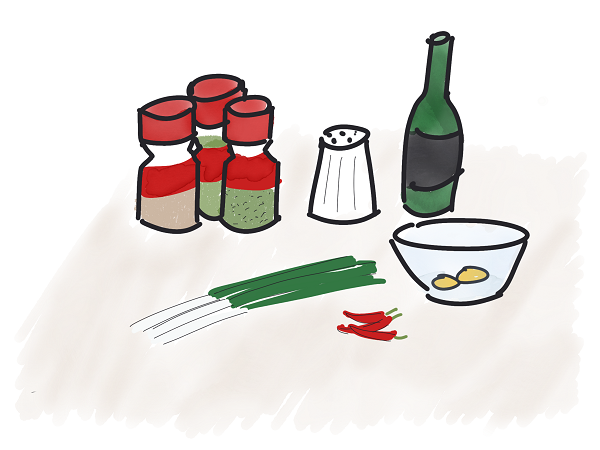Mise en place
A tip for the mind from French cooking.
What I learn from cooking
To me, cooking is a satisfying activity with a short feedback loop.
I like to cook my own food in the evening, and there are many things I learned from the process.
One thing I learned was how I make mistakes.
Mistakes?
I commit many mistake when I cook. Even when I’m using a recipe, many times I’d realize “Oh, I should have done this” after I plate the food.
Of all the mistakes, the most common one is:
I forgot the salt
Kitchen is a chaotic place when you are juggling multiple dishes.
Many times, only after I had put the food on the dining room table, I realized that I forgot adding salt.
It could look like a perfect dish of stir fry—but instead of being full of flavor, the vegetables taste bitter and bland.
Cooking is a chemical reaction. You may want to put the salt in early to drain the liquid out and bring out the flavor, and you may want to put in late so it hits your palate when you serve.
I’ve tried many things to prevent simple mistakes, but I’d still forget from time to time.
Mise en place
Then I learned about mise en place.
From Merriam-Webster:
mise en place
a culinary process in which ingredients are prepared and organized (as in a restaurant kitchen) before cooking

Simple steps to reduce mistakes
By laying out all the ingredients before me, my mind can quicky
- analyze if anything is missing. If yes, I can pick up from a grocery store before I start cooking and not panicking when I’m half way.
- play the steps of making this dish in my head so I can remember when to put the right amount of condiments and spices in at what step.
In other words, by letting my eyes see the ingredients before I start, it reduces the number of mistakes I can make.
Putting salt next to the pan makes me remember to add salt. It’s that simple.
A useful principle
Once I see it works, I started applyng the same principle outside of my kitchen.
At work, I lay out all the things I need to do in the morning, play the day through my head, and do them.
When I work on a task, I write down all the steps and the tools I need, figure out where all the complexities are, then execute.
When I plan for my budget for the year, I list all the expense categories out before I start filling in the details.
Seeing helps doing
I think mise en place is such an effective trick because it relies on the best way to stimulate our brain: seeing.
By putting things down to where we can see, we think better and make less mistakes.
I’ll conclude with a quote from Anthony Bourdain in Kitchen Confidential:
Mise-en-place is the religion of all good line cooks. Do not fuck with a line cook’s ‘meez’—meaning his setup, his carefully arranged supplies of sea salt, rough-cracked pepper, softened butter, cooking oil, wine, backups, and so on.
As a cook, your station, and its condition, its state of readiness, is an extension of your nervous system…
Make my nervous system work for myself—I like it.
PS. If you want to improve your home cooking, try this book: The Food Lab by Kenji Alt-Lopez (affiliate link). The hardcover is a thing of beauty and belongs to every home chef’s bookshelf.